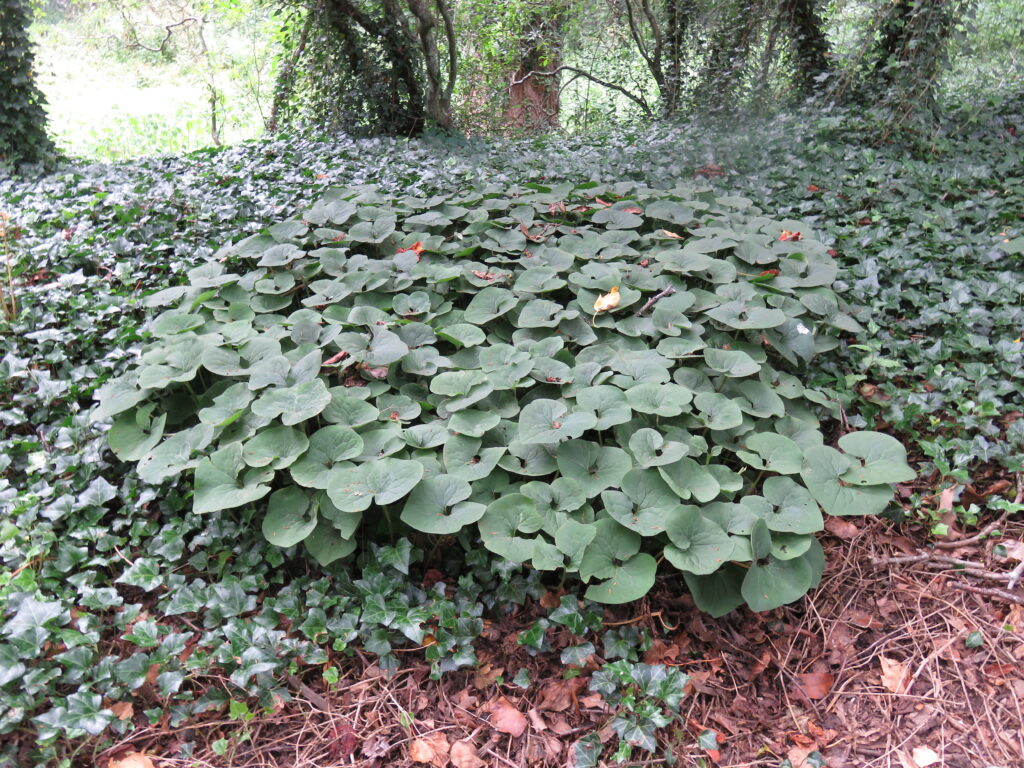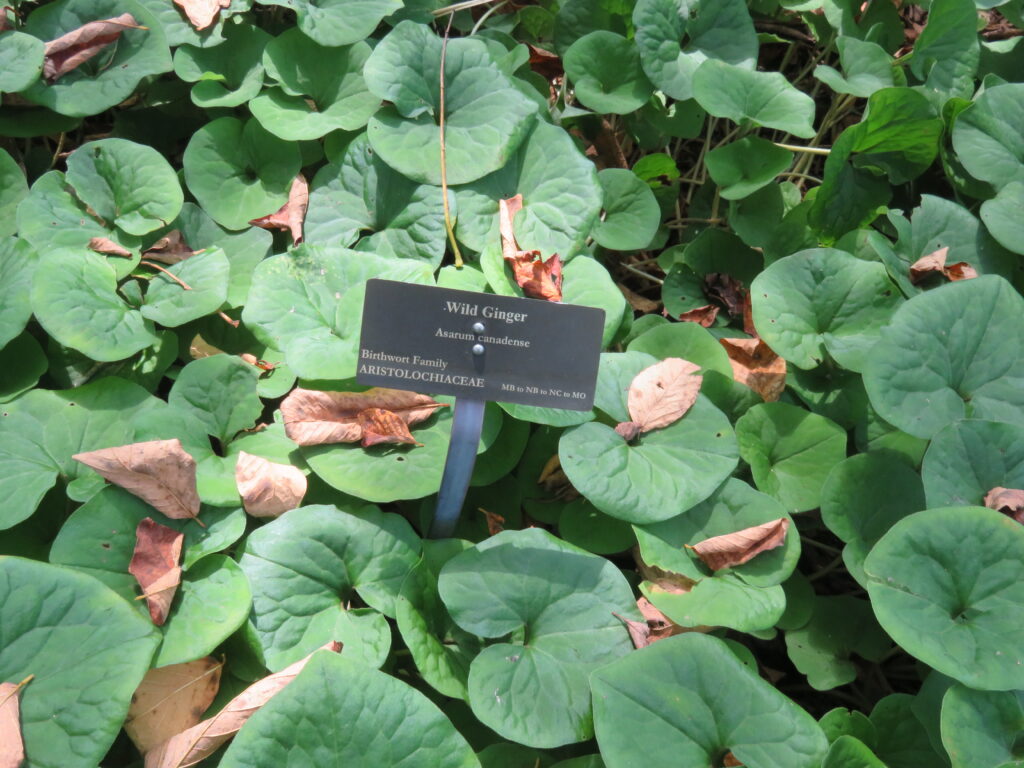
Wild ginger (Asarum canadense) is a U.S. native spring wildflower which grows in rich garden and woodland soils. Wild ginger is a stemless 4-8-inch-tall plant (8 -10 inches wide) which features distinctive downy, basal, dark green foliage. Leaves are heart-shaped to kidney-shaped, and delicately veined, and up to 6 inches wide. Cup-shaped, purplish brown, 3 lobed, 1-inch-wide flowers appear in spring on short, ground-level stems. Flowers are often referred to as ‘little brown jugs”. Upon close inspection, flowers are borne singly on or near the ground and are mostly hidden within the foliage. (USDA hardiness zones 3-8).
Wild ginger is a native form of ornamental ginger in the Aristolochiaceae family that spans Canada into the U.S. This attractive groundcover is easily grown, although a bit slow spreading at the start. Do not confuse wild gingers with the “true gingers” which are aromatic plants from tropical countries and are not closely related to Asarum.
Asarum canadense exhibits poor drought tolerance. Plantings prosper in high organic matter gritty soil and under light to deep shade gardens. Once established after 1-2 years, wild ginger tolerates moderate drought. It can be propagated by underground rhizome divisions or from seeds.
Flowers appear in April or May and the smallish greenish hairy pointer flower lobes are hidden under the leaves and are of little ornamental value. Pollinators, mostly bees, are attracted to their sweet fragrance. Flowers are also self-pollinating. Ants, attracted by the oily chemical in wild ginger seed called “elaiosome”, disperse the seeds of wild ginger across the woodland floor in autumn and germinate the next spring. Leaves of wild ginger are deciduous, drop and decaying to the ground over winter.

The handsome foliage and high shade tolerance make wild gingers a great option for a woodland, shade, or rain/boggy grounds. Plant them as edging or border plants which easily naturalizes as a deciduous groundcover. This plant tolerates deer browsing, wet soils, heavy shade, and erosion.
Few, if any, disease and insect pests trouble wild ginger. Thrips, slugs and snails are occasionally bothersome.
As stated early, asarums are not related to culinary ginger (Zingiber officinale), a native of Asia; ginger root is widely used as a spice and a folk medicine. Wild ginger has a long history of medicinal and culinary use by Native Americans and early settlers of eastern North America.

 Posted in
Posted in 
